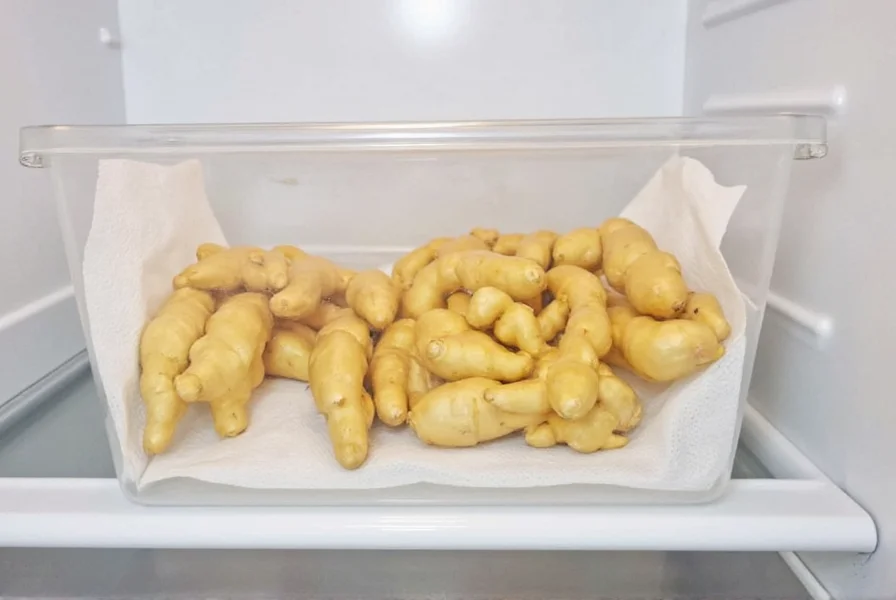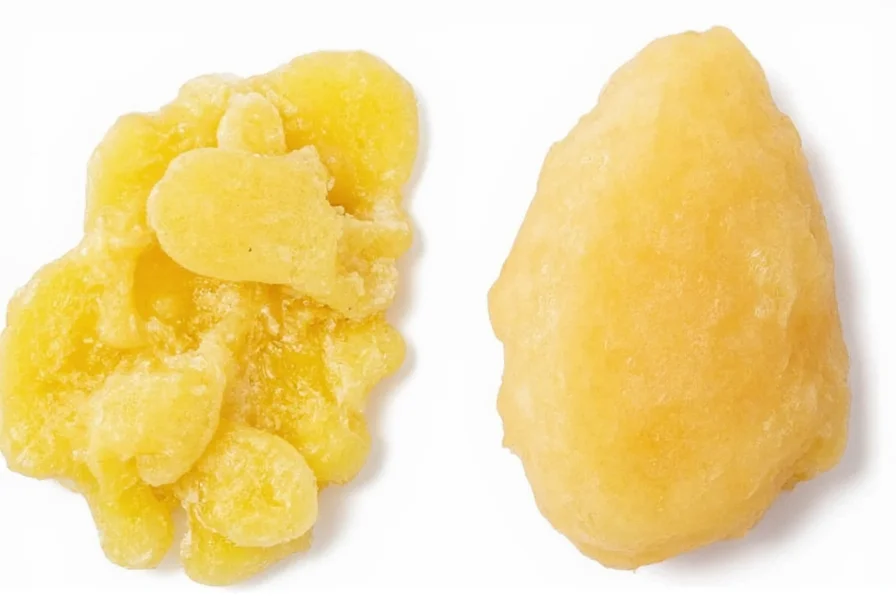Proper ginger storage is essential for home cooks and culinary enthusiasts who want to maximize the shelf life of this versatile root. Many people struggle with ginger becoming moldy, shriveled, or slimy within days of purchase, wasting both money and this valuable ingredient. Understanding the science behind ginger preservation can help you keep your ginger fresh significantly longer.
Why Proper Ginger Storage Matters
Ginger contains high moisture content (approximately 80%) and natural enzymes that continue to break down the root after harvest. When exposed to air, light, or improper humidity levels, ginger quickly loses its firmness, develops mold, or becomes fibrous and dry. The proper storage method creates an environment that slows these natural degradation processes while preserving ginger's distinctive flavor compounds.
Understanding Ginger's Storage Requirements
Ginger is a rhizome, not a true root, which affects how it should be stored. Unlike potatoes or onions, ginger requires a balance of humidity control and air circulation. Too much moisture encourages mold growth, while too little causes dehydration. The ideal storage environment maintains moderate humidity while allowing minimal air exchange.
Comparing Ginger Storage Methods
Not all storage methods deliver equal results. Here's how common approaches compare in terms of effectiveness:
| Storage Method | Shelf Life | Effectiveness Rating | Key Considerations |
|---|---|---|---|
| Refrigerator (paper towel method) | 3-4 weeks | ★★★★★ | Maintains texture and flavor; prevents mold |
| Freezer (whole or sliced) | 6 months | ★★★★☆ | Slightly alters texture but preserves flavor |
| Room temperature (counter) | 1 week | ★☆☆☆☆ | Rapid moisture loss; high mold risk |
| Submerged in alcohol/vinegar | 1 month | ★★★☆☆ | Alters flavor; best for pickled applications |
Step-by-Step Guide to Refrigerator Storage
The refrigerator method consistently delivers the best results for maintaining fresh ginger's quality. Follow these steps for optimal storage:
- Leave ginger unpeeled (the skin provides natural protection)
- Gently brush off excess dirt (avoid washing, which adds moisture)
- Wrap in a dry paper towel to absorb excess moisture
- Place in an airtight container or resealable plastic bag
- Store in the vegetable crisper drawer of your refrigerator
- Check weekly and replace paper towel if damp
This proper way to store fresh ginger root creates a microenvironment that regulates humidity while preventing excess moisture buildup. The paper towel absorbs condensation that would otherwise encourage mold growth, while the airtight container maintains consistent humidity levels.

Freezing Ginger for Long-Term Storage
For those seeking long term storage for fresh ginger, freezing is an excellent option that preserves flavor compounds effectively. Unlike many vegetables, ginger freezes well without blanching:
- Whole ginger: Peel and freeze in airtight freezer bags (up to 6 months)
- Sliced ginger: Cut into coins, freeze on baking sheet, then transfer to container (best used within 4 months)
- Ginger paste: Grate frozen ginger directly into recipes (no thawing needed)
One advantage of frozen ginger is that you can grate it directly from the freezer without thawing, which many chefs prefer as it creates a finer texture. This method works particularly well for how to store cut ginger that you won't use immediately.
Signs Your Ginger Has Gone Bad
Even with proper storage, ginger eventually deteriorates. Recognize these signs that ginger has gone bad:
- Mold growth: Visible fuzzy spots (white, green, or black)
- Texture changes: Soft, slimy, or excessively wrinkled surface
- Smell: Sour or fermented odor instead of spicy, citrusy aroma
- Color: Darkened spots or grayish hue beneath the skin
If you notice only minor surface mold, you can sometimes salvage the ginger by cutting away at least 1 inch around the affected area. However, if the mold has penetrated or the ginger smells off, discard it completely.
Maximizing Ginger Shelf Life: Pro Tips
Follow these expert recommendations to extend your ginger's freshness:
- Buy ginger with smooth, taut skin and no soft spots
- Store unpeeled ginger whenever possible (peeling accelerates spoilage)
- Keep ginger away from strong-smelling foods (it readily absorbs odors)
- For cut ginger, place the cut side down on a paper towel in your storage container
- Rotate your ginger supply using the "first in, first out" principle
Understanding how long does fresh ginger last in fridge helps manage expectations—properly stored, it should remain usable for 3-4 weeks, though peak quality occurs within the first 2 weeks. The refrigerator's consistent cool temperature significantly slows the enzymatic processes that degrade ginger's quality.

Special Considerations for Different Ginger Uses
Your intended use affects the best storage approach. For baking and desserts where texture matters less, frozen ginger works perfectly. For sushi or garnishes where appearance is critical, refrigerated ginger maintains better visual quality. When making ginger tea, frozen ginger actually releases flavor more readily as it thaws.
Many people wonder does ginger need to be refrigerated—while it doesn't strictly require refrigeration for short-term use, refrigeration dramatically extends its shelf life and maintains quality. The paper towel method in the refrigerator represents the optimal balance of moisture control and air circulation for how to keep ginger fresh in refrigerator conditions.
Frequently Asked Questions
Can you store ginger at room temperature?
Yes, but only for short periods. Unpeeled ginger stored in a cool, dark place will last about 1 week at room temperature. However, humidity and temperature fluctuations accelerate spoilage, making refrigeration the superior option for anything beyond immediate use.
How long does fresh ginger last in the refrigerator?
Properly stored fresh ginger lasts 3-4 weeks in the refrigerator when wrapped in a paper towel and placed in an airtight container. Check weekly and replace the paper towel if it becomes damp to prevent mold growth and maximize shelf life of fresh ginger.
Should you wash ginger before storing it?
No, washing ginger before storage introduces excess moisture that encourages mold growth. Instead, gently brush off dirt with a dry cloth or soft brush. If necessary, rinse only the portion you'll use immediately and dry thoroughly before returning the remainder to storage.
Can you freeze ginger with the skin on?
Yes, you can freeze ginger with the skin on, though many prefer to peel it first for easier use later. Frozen ginger skin becomes brittle and peels off easily when frozen, so leaving it on initially doesn't complicate later use. This method works well for long term storage for fresh ginger when you don't need immediate access.
What's the best container for storing ginger?
The best container for storing ginger is an airtight glass or plastic container lined with a paper towel. Alternatively, a resealable plastic bag with a paper towel works well. The container should be just large enough to hold the ginger without excessive air space, which helps maintain proper humidity levels for optimal freshness.











 浙公网安备
33010002000092号
浙公网安备
33010002000092号 浙B2-20120091-4
浙B2-20120091-4